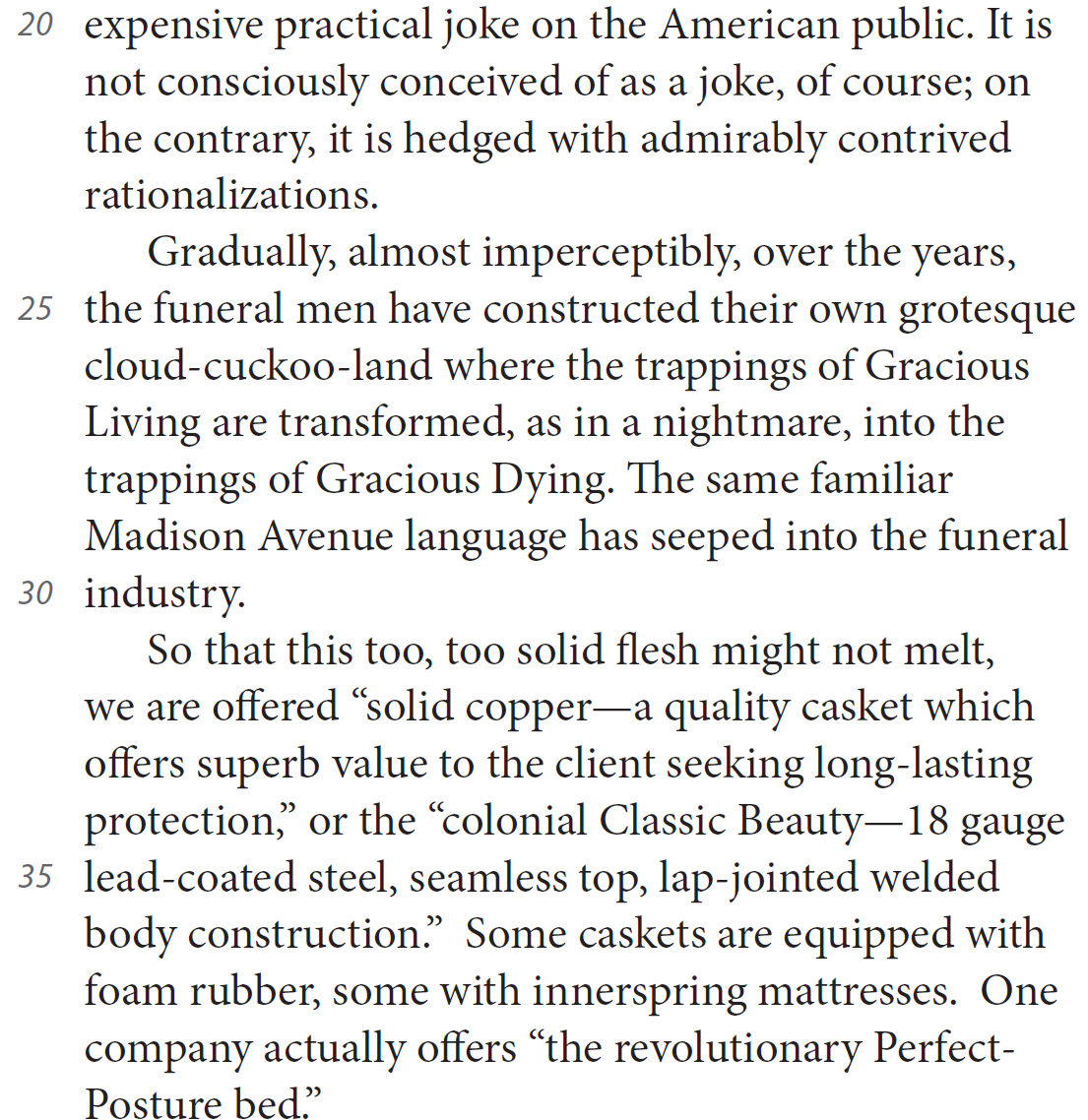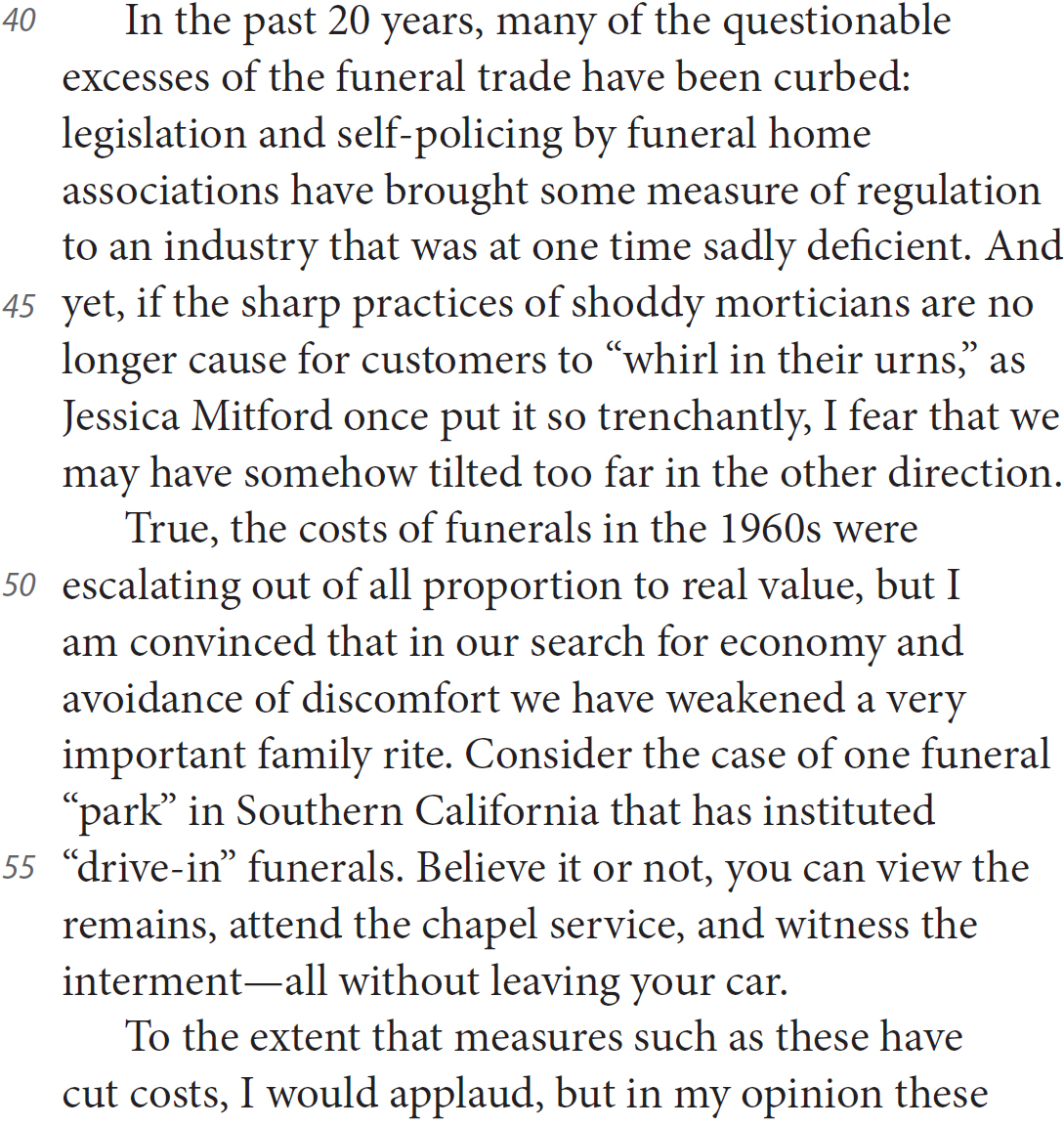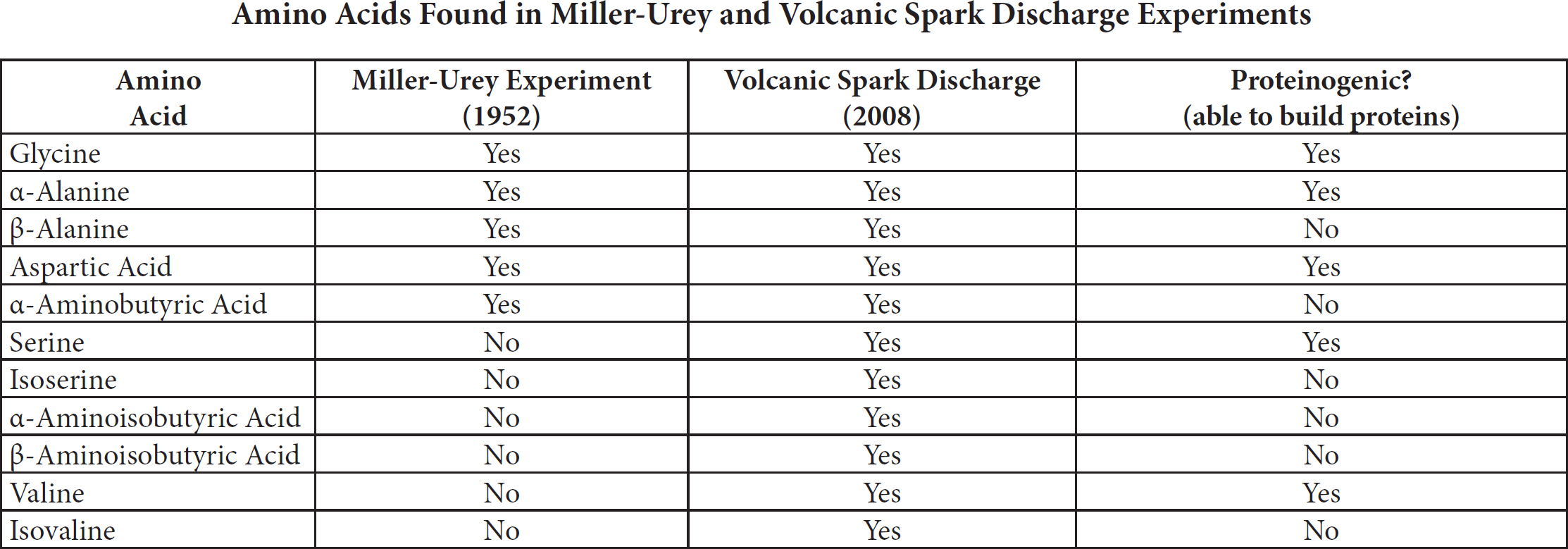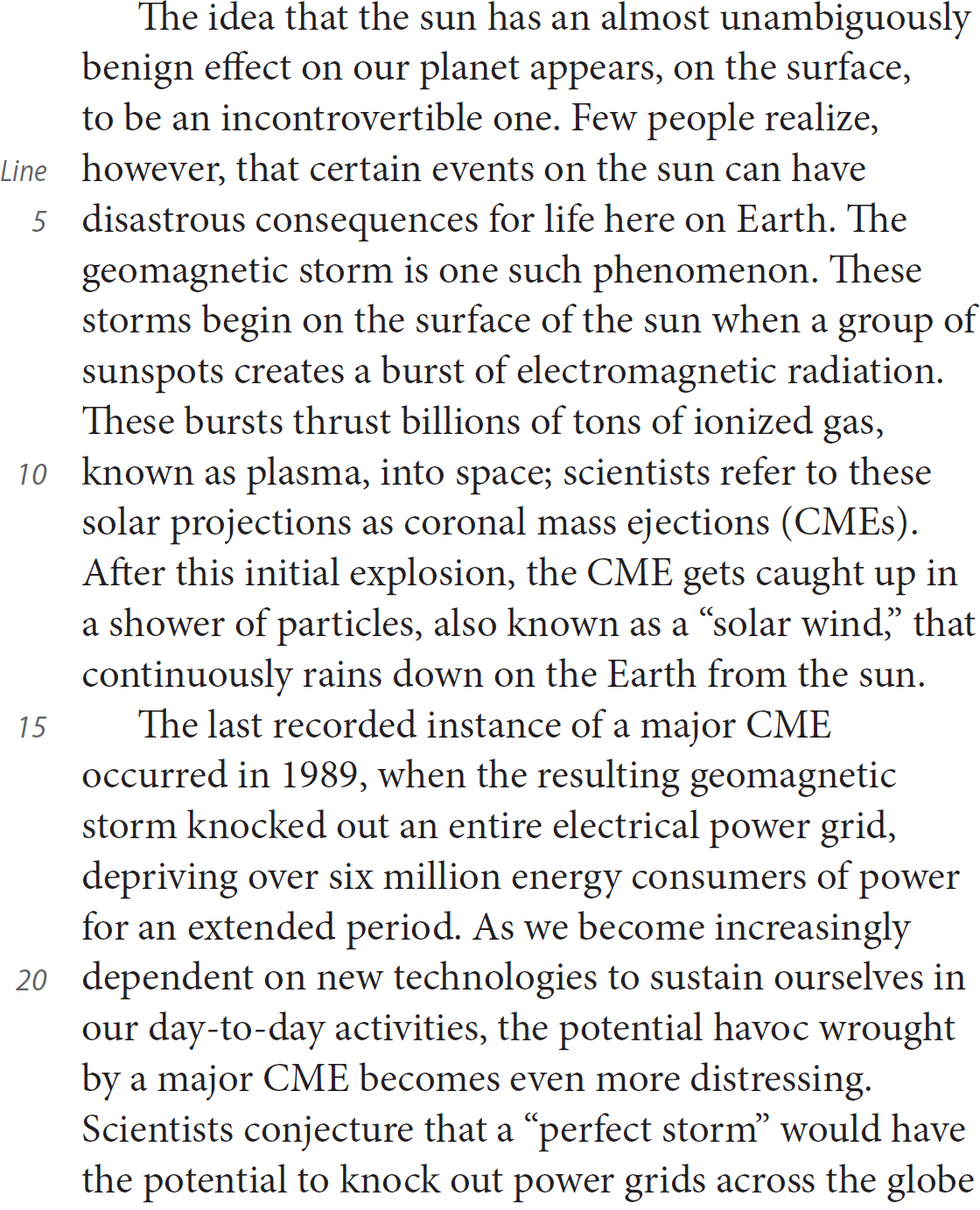Chapter 4
Reading Practice Test

Reading Test
65 MINUTES, 52 QUESTIONS
Turn to Section 1 of your answer sheet to answer the questions in this section.
DIRECTIONS
Each passage or pair of passages below is followed by a number of questions. After reading each passage or pair, choose the best answer to each question based on what is stated or implied in the passage or passages and in any accompanying graphics (such as a table or graph).
Questions 1–10 are based on the following passage.
The following passage is an excerpt from a memoir written by writer John Burke, about the novelist Joseph Heller.



1. The main purpose of the passage is to
A) illustrate that authors do not make as much money as people may expect.
B) describe an event that may have changed the author’s perception of himself.
C) prove that Catch-22 is the best book ever written.
D) provide insight into the contrast between how people expect the famous to behave and how they actually do.
2. Which choice provides the best evidence for the answer to the previous question?
A) Lines 4–7 (“We…written”)
B) Lines 22–25 (“I was…often”)
C) Lines 41–42 (“He was…thinking”)
D) Lines 61–62 (“I think…life”)
3. Based on the information the passage provides about Heller’s novel, Catch-22 can best be described as
A) a provocative book that appealed almost exclusively to young men.
B) a memoir whose appeal depended on readers’ proximity to the events that had influenced its creation.
C) a novel whose brilliance might appeal to people who were not directly affected by U.S. involvement in Vietnam.
D) an inspiring and realistic account of one soldier’s valor.
4. The author uses the phrase “however you felt about the issue” (line 13) to signal
A) that not all critics agreed with the author’s assessment of Catch-22’s excellence.
B) that the book was valued by the author and his friends because of its ability to stir up debate.
C) that the Vietnam War was the subject of much debate.
D) that books can generate strong emotional responses in readers.
5. The author quotes his own comment to his friend in lines 33–34 primarily in order to
A) emphasize the strength of his initial reaction to Heller’s speech.
B) suggest that the reason Heller almost didn’t stop as he was leaving was that he had overheard this comment.
C) highlight the author’s suspicion that Heller had sent a stand-in to deliver his speech.
D) inject some humor to counterbalance the overall somber nature of the passage.
6. The author describes Heller’s speech (lines 30–45) primarily in order to
A) show that the students’ initial skepticism was overcome by their interest in what he was saying.
B) illustrate the powerful effect a good speaker can have.
C) provide a warning not to judge people by how they speak.
D) respond to charges that Heller’s work is overrated.
7. Which choice provides the best evidence for the answer to the previous question?
A) Lines 30–32 (“When…impediment”)
B) Lines 38–39 (“There…auditorium”)
C) Lines 40–41 (“And then…brilliant”)
D) Lines 43–44 (“He…spellbound”)
8. In the context of the passage as a whole, it can be inferred that the most likely cause of the “difficulty” (line 48) the author had in returning to the school gate was the
A) effect of the emotions Heller’s speech had generated.
B) crowd of other students who were waiting to see Heller’s departure.
C) injury the author had sustained in the Vietnam War.
D) fact that he has limited physical mobility.
9. In line 50, “fielded” most nearly means
A) answered.
B) evaded.
C) asked.
D) caught.
10. It can be inferred from the passage that the most likely reason the author had to “screw up all [his] courage” (line 53) was that
A) he was embarrassed about his own speech impediment.
B) he greatly admired Heller.
C) he was afraid Heller would not respond to him.
D) he thought Heller would be annoyed to deal with another student.
Questions 11–21 are based on the following passages.
The following two passages present two views of the funeral industry in the United States. The first passage is an excerpt from a book written in 1963 by a journalist and takes a hard look at funeral practices at the time. The second passage was written in the 1980s by a member of the funeral business and looks at the changes in the industry since the first book appeared.
Passage 1


Passage 2


11. The first paragraph suggests that the “sting” referred to in the question, “Oh death, where is thy sting?” (line 1) is
A) the suffering from which the dead are released.
B) the consequence of the bitterness when heirs fight over an inheritance.
C) the challenges and costs of dealing with the funeral industry.
D) the painful recognition of all that the dying leave behind.
12. It can be inferred from the passage that the “dismal traders” (line 14) are
A) undertakers.
B) shopkeepers.
C) famous writers.
D) practical jokers.
13. The phrase “Madison Avenue language” is used by the author of passage 1 (line 29) to describe language aimed at
A) distracting mourners from the pain of their losses.
B) persuading people to buy things they don’t need.
C) evoking the nightmarish aftermath of sudden death.
D) helping people to live graciously even in their suffering.
14. The examples provided in the last paragraph of passage 1 primarily serve to
A) illustrate how many different casket options are available.
B) demonstrate that modern undertakers have a sense of humor.
C) point to some ironies in the way modern funeral trappings are marketed.
D) highlight the extent to which some caskets will delay the decaying of a corpse.
15. The primary purpose of the second passage is to
A) condemn some new practices as ineffective in terms of addressing the escalating costs of funerals.
B) speculate on how Jessica Mitford might respond to the recent changes in the funeral industry.
C) argue that recent cost-cutting measures have had a detrimental effect on how funerals serve the mourners.
D) suggest that the purposes of each step in a funeral be spelled out more clearly.
16. Which choice provides the best evidence for the answer to the previous question?
A) Lines 40–41 (“In the…curbed”)
B) Lines 49–53 (“True…rite”)
C) Lines 55–57 (“Believe…car”)
D) Lines 68–70 (“More…wreaths”)
17. In line 41, “curbed” most nearly means
A) brought under control.
B) made public.
C) eliminated.
D) allowed to proliferate.
18. According to the second passage, the excesses of the funeral trade have been changed for the better as a result of the
A) passage of time.
B) institution of services such as drive-in funerals.
C) elimination of flowers and wreaths at services.
D) actions of legislators and trade associations.
19. The author of passage 2 cites the example of “drive-in funerals” (line 55) in order to
A) illustrate the kind of practices that are detrimental to an essential function of funerals.
B) condemn people who consent to mourn this way.
C) demonstrate the ways the funeral industry has changed for the better.
D) rebut claims that the funeral industry has failed to change in the past twenty years.
20. The phrase “in lieu of” (line 69) most nearly means
A) instead of.
B) as well as.
C) because of.
D) in the form of.
21. The authors of both passages are likely to agree that the funeral industry
A) preys on the suffering of the bereaved.
B) is unlikely to change.
C) engages in widespread shoddy practices.
D) was in a troubled state in the 1960s.
Questions 22–31 are based on the following passage.
Scientists, theologians, and lay persons have debated the origins of life on Earth for hundreds of years. The following passage presents one scientist’s explanation.




Note: The Volcanic Spark Discharge Experiment was done in 2008 by a student of Stanley Miller’s. Miller’s original vials, still sealed from the 1950s, were re-analyzed using the most recent techniques and technologies.
22. Which choice best reflects the overall sequence of events in the passage?
A) A theory is proposed, tested, and proved to be impossible; an alternative theory is then presented.
B) A difficult question is introduced and the reasons why the question is difficult to answer definitively are explored in some detail.
C) The assertion is made that a scientific conundrum is impossible to answer and several experiments are described as illustration of the futility of tackling the problem.
D) A challenging question is introduced, a theory is set forth, and its key limitation is raised before a second theory is put forward and a related experiment is described.
23. The author’s assertion that “We can allow the first few hundred million years to pass” (lines 3–4) primarily reflects the author’s sense that
A) humans have no way to fully measure or comprehend the long history of Earth.
B) it would take far too long to describe the history of Earth in detail.
C) the most relevant aspects of Earth’s history for the purposes of the passage are those that emerged about 4 billion years ago.
D) time and tide wait for no man.
24. The author most likely views the theories of Svante August Arrhenius as
A) innovative and daring.
B) dramatic but too elaborate.
C) interesting but unlikely.
D) illogical and impossible.
25. The word “generation” in line 29 most nearly means
A) creation.
B) reproduction.
C) offspring.
D) forebears.
26. It can be inferred that the fact that in primordial times “Earth’s atmosphere did not contain oxygen” (lines 39–40) is significant to the author’s explanation primarily because
A) without oxygen, human life could not exist.
B) all energy sources produce more intense heat in the absence of oxygen.
C) the question of how oxygen made its way into Earth’s atmosphere has not been answered definitively.
D) without oxygen, the atmosphere lacked ozone to block some of the Sun’s rays.
27. The author uses the example of Stanley Lloyd Miller’s experiment primarily to
A) introduce the idea that laboratory confirmation of a theoretical possibility exists.
B) suggest the need for further research in the field.
C) speculate about the materials that were present when the Earth was first created.
D) highlight the significance of amino acids in understanding the origins of life.
28. Which choice provides the best evidence for the answer to the previous question?
A) Lines 43–46 (“In 1954…alive”)
B) Lines 46–49 (“He…beginning”)
C) Lines 52–55 (“At the…ones”)
D) Lines 55–56 (“Among…acids”)
29. The author’s conclusion at the end of the last paragraph would be most directly supported by additional information concerning
A) what other chemical materials were present on Earth 4 billion years ago.
B) what factors might have kept life from emerging earlier.
C) whether other scientists were able to re-create Miller’s experiments and achieve similar results.
D) whether the addition of other chemicals into Miller’s initial mixture changed the experiment’s outcome.
30. Which of the following claims is supported by the table?
A) More amino acids were discovered in the twentieth century than in the twenty-first century.
B) New technologies are able to detect more amino acids than were earlier technologies.
C) All the proteins discovered in the Miller-Urey experiment have the ability to form organic material.
D) The Volcanic Spark Discharge experiment found exactly twice as many amino acids as the Miller-Urey Experiment.
31. Information presented in the table most directly supports which idea from the passage?
A) Spores drifting across space landed on the planet and were brought back to life.
B) An energy source could prompt spontaneous generation of life from existing elements.
C) Because of the lack of oxygen in the atmosphere, the rays of early Earth’s sun were undiluted.
D) The simplest lifeform imaginable is a single-strand RNA molecule.
Questions 32–42 are based on the following passage.
The following passage relates some conclusions the author draws after listening to a seminar speaker denounce some modern conveniences for their negative effects on people’s personal lives.




32. The structure of the passage overall can best be characterized as
A) a narrative that traces the development of the author’s ideas on a topic that is raised by some people the author encounters during the events described.
B) a balanced assessment of a theory that is introduced, considered, and ultimately debunked.
C) a short anecdote followed by the introduction of a theory and the presentation of evidence related to that theory.
D) a consideration of several sides of an issue that is generally understood to be outdated, followed by a conclusion that redefines the terms under discussion.
33. The author’s ultimate attitude toward the symposium speaker can best be described as
A) assent tinged with irreverence.
B) puzzlement tinged by scorn.
C) disagreement coupled with dislike.
D) affection bolstered by nostalgia.
34. Which choice provides the best evidence for the answer to the previous question?
A) Lines 10–14 (“The speaker…programs”)
B) Lines 32–33 (“As I…thoughts”)
C) Lines 48–51 (“The temporary…impersonal”)
D) Lines 74–76 (“And I’m…all”)
35. In the context of the overall passage, the details about the setting in which the author sat to eat lunch serve primarily to
A) paint a picture in the reader’s mind.
B) raise the question of whether the same conclusion would have been reached if the author had encountered the two girls in a busier, urban setting.
C) contribute to the author’s growing awareness that there is some validity to what is initially portrayed as the speaker’s antiquated or overly romantic viewpoint.
D) evoke a sense of an idyllic college campus.
36. The author’s decision to use quotation marks around the word “controversial” in line 9 and to italicize the phrase “they are never alone” in lines 65–66 can best be described as
A) a variation in techniques that is intended to keep the reader’s interest by avoiding too much repetition.
B) an inconsistency that might have been pointed out by a copyeditor.
C) a matter of personal preference that reinforces the author’s whimsical approach to the material.
D) a desire to call the use of one term into question and to suggest an alternative interpretation of the other.
37. The main purpose of the third paragraph is to
A) link the symposium speaker’s outdated argument to his age and fatigue.
B) contrast the modern attitudes of the girls on their phones with the antiquated ideas of the symposium speaker.
C) relate the events that occurred after the author encountered the two girls on their cell phones.
D) explain the main points of the symposium speaker’s address.
38. Based on the information in the passage, with which of the following statements about the “dancing and flashing smiley face icons” mentioned in lines 44–45 is the symposium speaker most likely to agree?
A) The use of such icons in anything but the most informal message is inappropriate.
B) The use of such icons might result in less reflection and less attention to the finer points of language selection.
C) Such icons have no place in a work of art.
D) The tendency of such icons to both dance and flash illustrates the exaggerated nature of most computer-facilitated communication.
39. The author provides the instances listed in lines 52–61 primarily as examples of
A) pet peeves that the author believes many other people can relate to.
B) experiences in the author’s life that offer support to the symposium speaker’s thesis.
C) rude behavior that the previous generation would not have tolerated.
D) occasions that reveal the need for a new etiquette guide to be written for the digital age.
40. What is the “significant price” (line 62) that is paid by the two girls the author observes during lunch?
A) The relatively higher phone bills they pay for using so much data
B) The confusion caused by trying to carry on a phone conversation when surrounded by other people
C) The sacrifice of opportunities for introspection and solitude
D) The awkward pauses that sometimes emerge in phone conversations when one of the participants is distracted
41. Which of the following would be the best title for a speech countering the arguments of the “Whimsical Professor” (line 75)?
A) “The Romance of Written Communication”
B) “Ties That Bind: How Electronic Communication Brings Us Together”
C) “Spelling Reform for the Computer Age”
D) “Too Convenient?: Benefits and Costs of Instant Communication”
42. As used in lines 15 and 76, the word “romantic” most nearly means
A) concerned with expressions of affection and love.
B) having an academic interest in the Romantic period.
C) not directly or practically applicable to current circumstances.
D) not platonic.
Questions 43–52 are based on the following passage.
Adapted from Bradley J. Phillips, Coronal Mass Ejections: New Research Directions. Journal of Solar Research, 2009.




43. Over the course of the passage, the focus shifts from
A) detailing the more positive aspects of an astronomical phenomenon to enumerating the counterbalancing costs of the phenomenon.
B) describing a phenomenon in layman’s terms to explaining the same phenomenon in scientific language.
C) introducing a relatively unknown danger to explaining the more challenging aspects of trying to address that danger.
D) warning of the dangers of a new phenomenon to celebrating the steps taken by governments to combat the dangers of that phenomenon.
44. The phrase “almost unambiguously benign” in lines 1–2 describes
A) the effect of the sun on the surface of Earth.
B) a failure to understand the effects of ultraviolet rays.
C) most people’s understanding of the effects of the sun on Earth.
D) solar projections that are referred to as coronal mass ejections.
45. With which of the following statements would the author of the passage be most likely to agree?
A) If more people knew about the harm that CMEs might cause, governments would be better able to implement their plans to offset the dangers.
B) The negative effects of CMEs on humans are likely to continue to worsen.
C) Scientists will not be able to overcome the challenges created by the great speed at which CMEs travel.
D) The term perfect storm is fittingly ironic when applied to a storm that can cause such immense damage.
46. Which choice provides the best evidence for the answer to the previous question?
A) Lines 3–5 (“Few…Earth”)
B) Lines 19–22 (“As we…distressing”)
C) Lines 23–27 (“Scientists…useless”)
D) Lines 37–41 (“CMEs…hours”)
47. Based on information in the passage, which of the following best describes the relationship between CMEs and geomagnetic storms?
A) Scientists know that CMEs occur daily, whereas the frequency of geomagnetic storms has not been accurately determined.
B) A geomagnetic storm is defined by changes in the DST, whereas a CME is a cause of changes in the DST.
C) The term CME refers to particularly large ejections of plasma, whereas the term geomagnetic storm applies to all ejections of plasma.
D) Coronal mass ejections are the solar phenomena that result in geomagnetic storms on Earth.
48. As used in line 44, “compounded by” most nearly means
A) derived from.
B) undone by.
C) combined with.
D) worsened by.
49. According to the passage, some governments seek to address the challenges of predicting when and how a CME will affect Earth by
A) developing a coordinating network of solar storm watchers to ensure that every CME is spotted as soon as it occurs.
B) moving as much as possible of the electrical power grid infrastructure underground.
C) placing a satellite in orbit around the sun.
D) installing voltage control equipment and increasing the volume of electricity generated by some power stations.
50. As used in line 52, “buy” most nearly means
A) provide.
B) earn.
C) waste.
D) purchase.
51. Which of the following statements is consistent with information in the passage and the graph?
A) In the period from 1980 to 2007, the most major CME and its correspondingly bad geomagnetic storm occurred in 2001.
B) In the years covered by the graph, the 6-year period in which CMEs most affected Earth was between 1980 and 1986.
C) Another very strong CME was due to occur in the years between 2007 and 2010.
D) The DST measure is inversely proportional to the strength of geomagnetic storm activity.
52. Which statement is best supported by the data presented in the graph?
A) One troubling aspect of CMEs is the difficulty in predicting when one will occur.
B) CMEs travel through space at speeds that approach 5 million miles per hour.
C) Only a storm as massive as the one that occurred at the end of the 1980s could wreak major havoc on the United States.
D) Scientists are currently able to determine the orientation of a CME’s magnetic field less than an hour before the storm reaches Earth’s atmosphere.